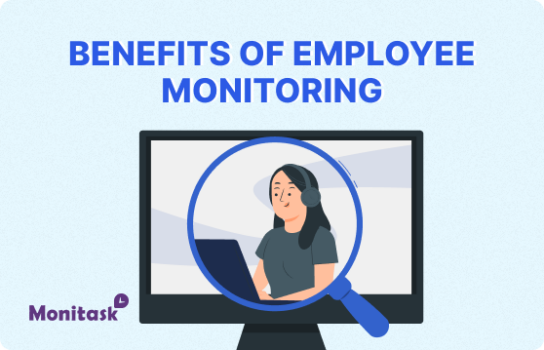Remote Contractor Management: Best Practices for Smooth and Scalable Collaboration
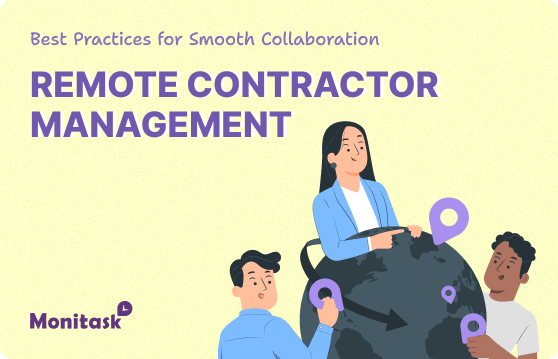
In a globalized world where digital transformation shapes the way businesses operate, managing remote contractors has become a vital part of many organizations’ workforce strategies.
Whether you’re a startup hiring international freelancers or an enterprise scaling operations with specialized remote talent, mastering remote contractor management is key to success.
This article will guide you through everything you need to know—challenges, tools, legal considerations, and best practices—to manage remote contractors effectively and responsibly.
What Is Remote Contractor Management
Remote contractor management is the process of overseeing independent professionals who work offsite, often from different countries or time zones. Hired on a contractual basis, these individuals handle specific tasks or projects rather than functioning as full-time employees.
Unlike traditional staff, remote contractors operate with autonomy—setting their own schedules, using their own tools, and managing their own taxes and benefits.
This setup reduces overhead for companies and offers greater flexibility, especially for global operations.
Success depends on clear project scopes, defined deliverables, and trust in the contractor’s ability to meet expectations independently.
Key characteristics of remote contractors include:
✅ Operating independently: They work without direct supervision and are accountable for their own output.
✅ Using their own tools: They bring their own equipment and software, tailored to their expertise.
✅ Setting their own schedules: They choose when and how they work, as long as project goals are met.
✅ Handling their own administration: Taxes, insurance, and benefits are their responsibility—not the employer’s.
Companies turn to remote contractors for flexibility, cost-effectiveness, and access to global expertise—but this model also requires a different management approach that emphasizes clear communication, well-defined deliverables, and trust.
Key Challenges of Managing Remote Contractors
While working with remote contractors offers flexibility, scalability, and access to global talent, it also presents unique challenges that require careful planning and proactive management.

Time Zone Differences
When your contractors are spread across different continents, time zone gaps can slow things down. A simple clarification that would take five minutes in a co-located team might stretch into a 24-hour delay when you’re waiting for someone to wake up on the other side of the world. This affects real-time collaboration, especially when quick iterations, feedback, or urgent responses are needed. For teams that rely on frequent check-ins or agile workflows, asynchronous communication becomes essential—but it also requires more thoughtful planning and documentation.
Lack of Visibility
With no physical presence in the office and often no set working hours, it can be difficult to get a clear picture of what your remote contractors are doing day-to-day. This lack of visibility can be especially challenging for new or less experienced managers who are still building trust with their contractors. Are deadlines being met? Are projects progressing as expected? Without clear communication channels and regular updates, it’s easy for things to fall through the cracks—or for issues to surface too late.
Legal Compliance
Hiring contractors across borders means dealing with different labor laws, tax requirements, and classification rules. Some countries are strict about what qualifies as contract work versus employment, and getting this wrong can lead to serious fines, legal disputes, or reputational damage. There’s also the challenge of issuing payments in accordance with local tax systems, which can become a burden without the right infrastructure or legal support. In short, compliance isn’t just a legal box to tick—it’s a crucial part of protecting your business.
Security and IP Risks
Bringing in external contractors often means granting access to internal tools, sensitive information, or proprietary code. This creates a natural tension between enabling productivity and protecting your company’s intellectual property. Unlike employees, contractors may not be tied to long-term relationships or bound by the same security protocols, which increases the risk of data breaches or unauthorized use of company materials. Ensuring proper NDAs, secure access protocols, and role-based permissions is key to managing this risk responsibly.
Maximize productivity of your business
Track employee productivity and simplify work with them
Best Practices for Remote Contractor Management
Managing remote contractors effectively requires a thoughtful approach that balances autonomy with accountability. While flexibility is a major benefit of this model, structure is still essential. The following best practices help build a foundation for successful, long-term collaboration.
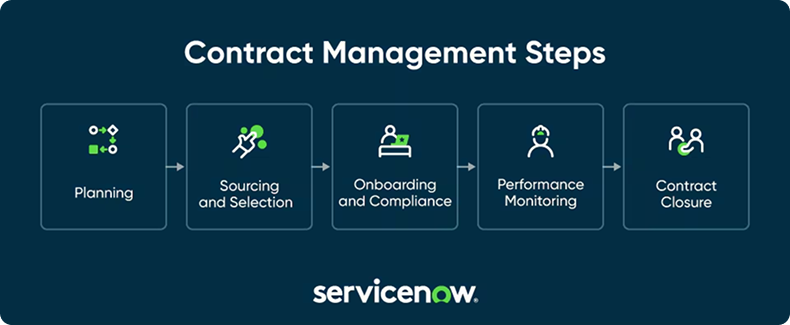
Set Clear Expectations
Setting clear expectations from the start ensures that everyone is aligned on goals and deliverables. This means outlining the project scope, defining success metrics, and agreeing on communication preferences. When contractors know exactly what’s expected, they can manage their time more effectively and deliver work that matches your standards. Clarity at this stage minimizes miscommunication and keeps the project moving smoothly.
Use Written Agreements
A well-crafted contract protects both parties and lays out the rules of engagement. It should specify the work to be completed, payment terms, timelines, confidentiality, and ownership of intellectual property. For international contractors, legal review can help you avoid pitfalls related to tax and labor laws. Putting everything in writing creates transparency and provides a reference point if questions or disputes arise later.
Establish Regular Communication
Staying in touch is essential—even when your contractors are experienced and self-sufficient. Regular check-ins create opportunities to course-correct, clarify priorities, and offer support. These meetings don’t have to be lengthy; even 15-minute weekly calls can make a big difference. When real-time calls aren’t possible, asynchronous updates through project management tools or short video messages are great alternatives that respect different time zones.
Track Work Without Micromanaging
Contractors thrive on autonomy, so it’s important to give them space while still ensuring accountability. The key is to focus on results rather than hours. For example, instead of requiring detailed timesheets, you might use tools that provide:
- Project-based progress tracking
- Milestone updates
- Automatic time logging without invasive screenshots
- Visual task boards that reflect real-time status
This kind of lightweight oversight ensures visibility without making contractors feel like they’re under surveillance.
Foster Professional Relationships
Treating contractors as valued collaborators fosters mutual respect and long-term loyalty. Acknowledge their expertise, invite them into relevant conversations, and offer constructive feedback. Even small gestures—like sharing positive outcomes from their work or recognizing their role in team wins—can strengthen the working relationship. When contractors feel seen and appreciated, they’re more likely to go the extra mile and continue working with your organization over time.
Top Tools for Managing Remote Contractors
Here’s a curated list of tools that simplify remote contractor management:
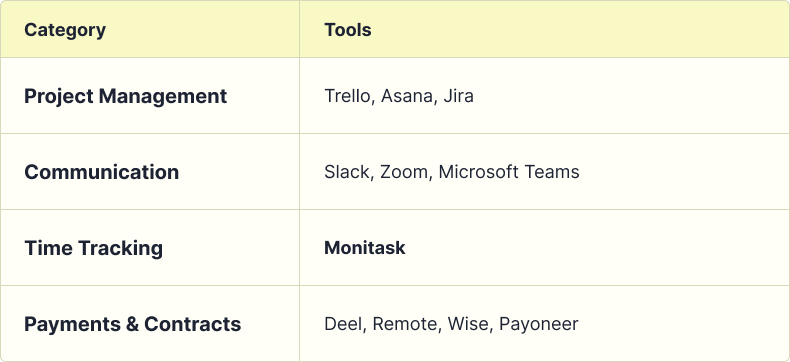
Tools like Monitask are especially useful for tracking remote hours and productivity without crossing privacy boundaries.
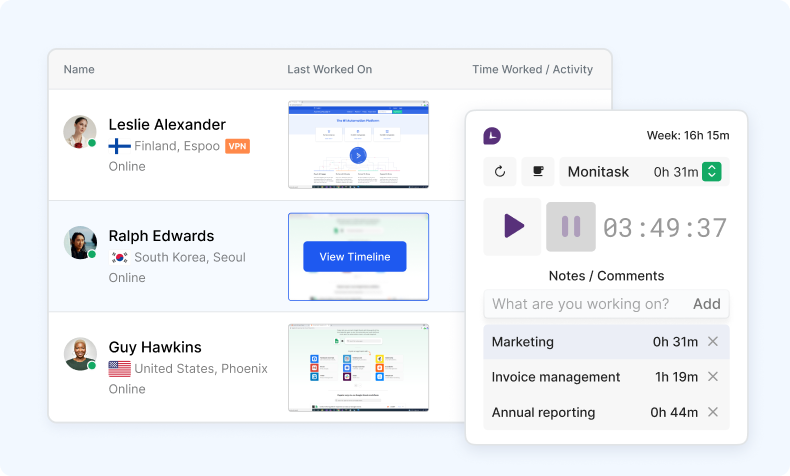
Legal and Tax Considerations
Managing remote contractors across borders requires careful attention to classification, compliance, and intellectual property.
Misclassifying a contractor as an employee—by controlling their schedule, tools, or methods—can lead to legal penalties. Contracts should include NDAs and clear IP ownership clauses to protect your business.
Tax responsibilities also vary by country; in some cases, the contractor handles their own taxes, while in others, the hiring company may need to report or withhold payments.
To avoid costly mistakes, it’s best to consult local legal experts or use platforms that ensure cross-border compliance.
Remote Contractor Management vs. Remote Employee Management
Though both work remotely, contractors and employees differ in expectations and obligations:
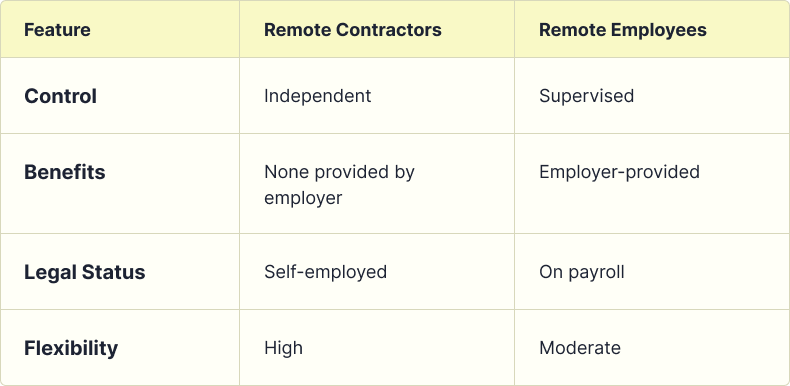
Use contractors for flexible, short-term, or specialized needs. Opt for employees when you need long-term commitment and more oversight.
Case Study: A Startup’s Growth with Remote Contractors
A fintech startup based in the U.S. scaled its operations by hiring 10 remote developers from Eastern Europe. They used tools like Jira for task tracking, Monitask for time logs, and Deel for contracts and payments. The result? Faster time-to-market and 40% lower costs—without sacrificing quality.
Conclusion: Strategic Advantage
Managing remote contractors effectively is more than delegating tasks—it’s about building strong, results-driven partnerships based on trust, clear expectations, and mutual respect. In a world where businesses operate across borders and time zones, contractors offer agility, access to global talent, and cost savings without sacrificing quality.
To maximize these benefits, companies need a structured approach: set clear deliverables, maintain regular communication, safeguard intellectual property, and ensure legal and tax compliance. Using the right tools for project tracking, time management, and payments helps maintain visibility and accountability without micromanaging.
With the right mindset and systems, remote contractor management becomes a true strategic advantage—allowing organizations to scale efficiently, tap into specialized expertise, and remain competitive in an increasingly digital, globalized marketplace.
– The Monitask Team
FAQ: Remote Contractor Management
Can I convert a contractor to a full-time employee?
Yes, converting a contractor to a full-time role is possible and fairly common, especially when both parties find the collaboration successful. However, you’ll need to formally update the employment status, provide appropriate benefits (such as healthcare, paid leave, or pension contributions), and comply with the labor laws of the contractor’s country. This often involves drafting a new employment contract and registering with relevant authorities. It’s a good idea to consult a legal expert to handle the transition smoothly and legally.
What’s the biggest mistake companies make?
The most frequent—and often costly—mistake is misclassifying contractors as employees. This happens when businesses unintentionally treat freelancers like staff by controlling their schedules, requiring use of company tools, or integrating them into internal workflows without clear distinction. Such misclassification can lead to audits, fines, and back payments of benefits or taxes. To avoid this, always define the nature of the relationship clearly in contracts and give contractors the autonomy that reflects their independent status.
How often should I communicate with remote contractors?
Consistent communication is vital, but it doesn’t have to be constant. Weekly or biweekly check-ins work well to stay aligned, track progress, and address blockers. When dealing with contractors across time zones, asynchronous communication—via tools like Notion, Slack, or Loom—can be more effective than scheduling live meetings. The key is to strike a balance between staying informed and giving your contractors the space they need to work independently.


